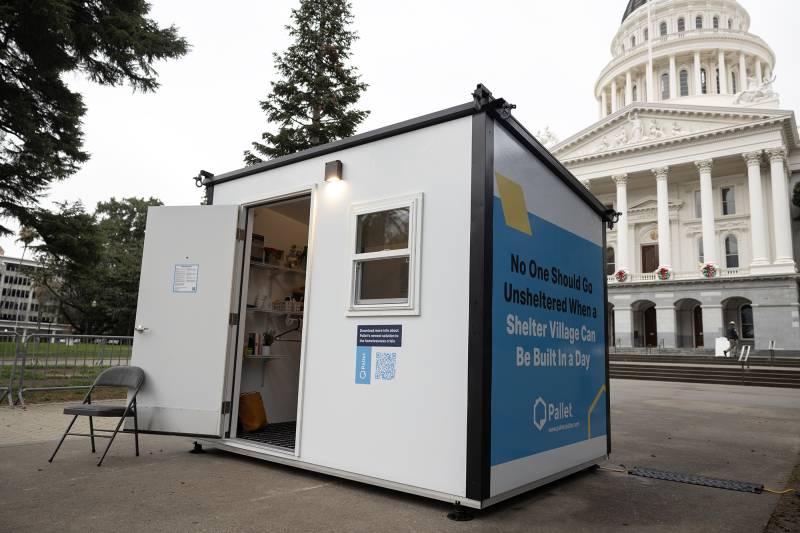Nearly a year ago, Gov. Gavin Newsom promised to deploy 1,200 tiny homes to help shelter the state’s growing population of unhoused residents. Now, the state has chosen who will build those tiny homes and what they will look like — but there’s still no word on when people will be able to move in.
Newsom's Tiny Home Plan Moves Forward, Construction Timeline Uncertain

Newsom unveiled his plans in March to deliver the tiny homes to Los Angeles, San Diego County, San José and Sacramento. The state has selected six companies to manufacture the dwellings:
- Pallet: a Washington-based company that makes small, fiberglass cabins specifically designed as temporary shelters for unhoused residents. Their dwellings have been used in several California cities, including Oakland, San José and Fresno.
- Factory OS: A Vallejo-based company that makes modular units that can be stacked and turned into apartment buildings or used alone as tiny homes.
- Boss: A Montebello-based tiny home company.
- Irontown Modular: A Utah-based modular construction company.
- AMEG: An El Dorado Hills-based modular home builder.
- Plugin House Company: An Austin, Texas-based modular home company.
The contracts, awarded at the end of October, do not specify how many tiny homes or which tiny home models the state will buy from each vendor, nor how much the state will spend. Even the vendors themselves don’t know many specifics.
“It is not clear to us today which product is going to which city or when,” Pallet CEO Amy King said. “We are on standby and at the ready to serve if we get called upon.”
There are more than 181,000 unhoused residents living in California, according to the state’s most recent estimates. Of those, more than 123,000 people live in encampments, vehicles, abandoned buildings or other places not meant for habitation.
In recent years, leaders in cities throughout California have leaned heavily on tiny homes as a way to move people out of the state’s many homeless encampments. The small dwellings, which are less expensive and easier to build than traditional housing, are intended to be a temporary respite where unhoused people can live while waiting for a permanent home.
Pallet’s standard 70-square-foot tiny home — a basic cabin with no plumbing — costs $18,900. A 120-square-foot unit with an en suite bathroom is significantly more expensive — $48,500.

The state requires each tiny home to be at least 70 square feet for a single person and 120 square feet for two people. They are not required to have en suite bathrooms.
Now that the contracts have been awarded, other cities not included in this state program can use their own funds to purchase the tiny homes without going through a lengthy process of seeking bids from multiple vendors.
Neither the governor’s office nor the state Department of General Services responded to questions about when the state-funded tiny homes will be installed or why the process has taken so long.
“Certainly, it would be great if it could go faster, but we understand the complexity,” King said. “I’m hopeful that now that we’re in 2024 and the contracts have been awarded, that things will move a little faster.”
